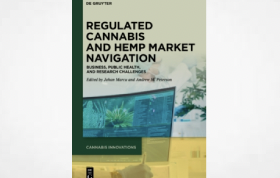The UN World Commission on Environment and Development defines sustainability as “meeting the needs of the present without compromising the ability of future generations to meet their own needs.”
When it comes to cannabis vaping, that goal can be interpreted as producing vape devices today without compromising the ability of future generations to live in a healthy environment.
Companies in all industries would be wise to take an incredibly long view of the market, and recognize that the key to long-term market growth is stability, and the only way to ensure stability into the foreseeable future is to focus on sustainability.
Consider the example of California’s gold rush. Miners were focused only on short-term profits with no consideration for the long-term costs, and left an environmental mess that taxpayers are still paying to clean up over a century later.
As the cannabis industry has long been referred to as the “green rush,” cannabis companies and governmental regulators should learn from the cautionary tale of the gold rush.
Though most cannabis consumers are probably more familiar with terms like “vape pen”, ”vape”, “cartridge”, “cart” or “vaping device,” a more accurate term for these devices is Electronic Cannabis Delivery System (ECDS), which we will be using throughout this paper. ECDS is modeled on the academic term for an e-cigarette, which is, Electronic Nicotine Delivery System (ENDS).
Though this may seem like a small semantic change, it is important because not all ECDSs are technically pens, and nor are they all technically vaporizers (as research has shown that low quality devices smolder the oil inside).3 ECDS and ENDS waste was found to be 42 million kilograms (about 46,297 US tons) per year, globally. In a 2023 United Nations report on ‘invisible’ e-waste (electronic products that are unwanted, not working, and nearing or at the end of their ‘useful life’, i.e., computers, televisions, VCRs, stereos, etc.), ECDS and ENDS waste was found
By comparison, that is fourteen times the amount of household medical equipment waste produced. While 42 million kilograms may sound like a lot, it is less than 0.5% of the total 9 billion kilograms of ‘invisible’ e-waste generated yearly. These wasted resources were found to be valued at $9 billion per year, making this a major economic and environmental issue.
These wasted resources were found to be valued at $9 billion per year, making this a major economic and environmental issue. While there are potential health concerns with low quality ECDSs, ranging from heavy metals leaching into the oil to adulterants like vitamin E acetate, those are generally problems with illegal ECDSs, rather than those available through the legal market.6
ECDS-related health concerns have been well-documented by journalists and academics over many years and the focus of this current white paper is on environmental health — sustainability. Though our present focus is on sustainability, it is important to recognize that communities are only as healthy as their environment and many diseases are the result of environmental pollution.
In this whitepaper we’ll outline the four major challenges to sustainability in cannabis vaping, and several solutions for businesses, governments, and consumers.
The-Green-Puff_-Transforming-Cannabis-Vaping-into-a-Sustainable-Practice-2024
















